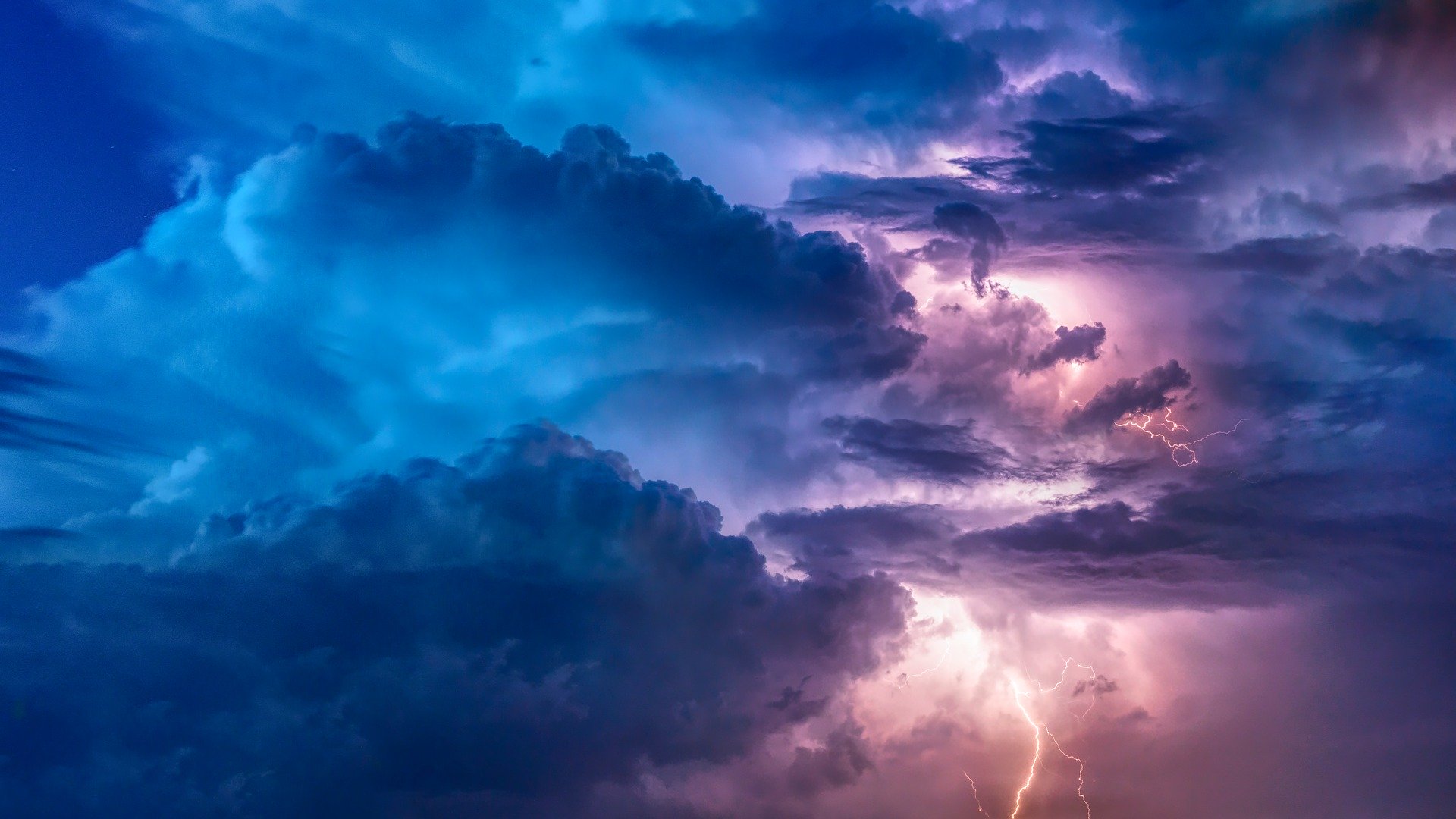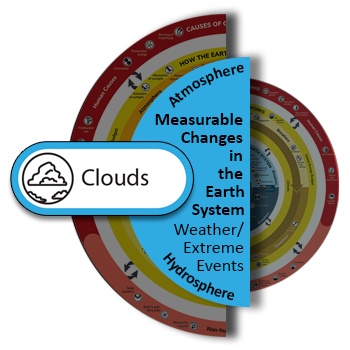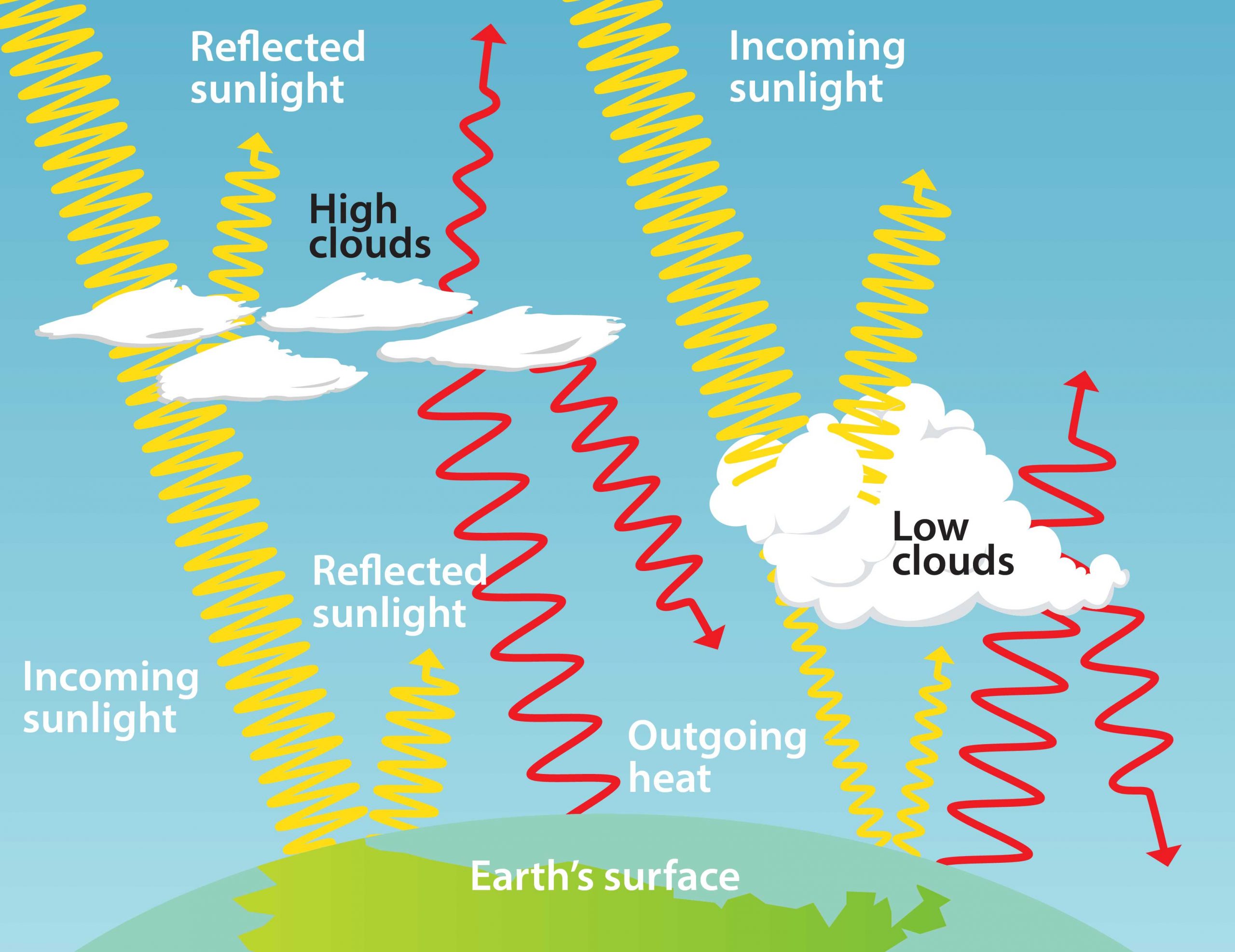Clouds are concentrations of water droplets and/or ice crystals that are so tiny that they float in the air. Air typically carries water vapor, which will condense into water droplets/ice crystals if the air is cooled because cold air cannot hold as much water vapor as warm air. The cooling of air that leads to clouds can occur in a number of different ways. For example, as air is warmed by the sun it rises, cooling as it does so. When air is forced to rise over hills or mountains it similarly cools and thus clouds may form. Typically, the water vapor that forms clouds condenses around tiny airborne particles to make the small water droplets and/or ice crystals. If the water droplets or ice crystals in a cloud become large and heavy enough they fall as precipitation.

A thunderstorm cloud. Source: Pixabay
Various human activities and environmental phenomena influence cloud formation and distribution, including:
- The concentration and distribution of airborne particles, around which the water droplets/ice crystals form. The burning of fossil fuels releases airborne particles that can increase the number of water droplets, thereby increasing the amount of cloud. For example, contrails are a type of ice cloud that form as water vapor condenses around small particles released in airplane exhaust.
- The burning of fossil fuels, agricultural activities, and deforestation, which increase the concentration of greenhouses gases in the atmosphere and thus the Earth’s average temperature. Increases in atmospheric and sea surface temperatures alter atmospheric circulation and patterns and thus how water cycles and where and when clouds form.
- Over millions of years mountain building alters local wind and thus cloud formation patterns.
- Over millions of years, changes in the distribution of continents and oceans can alter where and how much sunlight is absorbed or reflected by the surface of the Earth. This differential heating influences patterns of atmospheric and oceanic circulation, and thus where, when, and the extent of cloud cover.
Can you think of additional cause and effect relationships between clouds and other parts of the Earth system?
Visit the water cycle, precipitation, and the atmospheric circulation pages to explore more connections between the hydrosphere, atmosphere, and other global changes.
Investigate
Learn more in these real-world examples, and challenge yourself to construct a model that explains the Earth system relationships.

